I would like to create a PWM generator with a 555 timer (like suggested here), but I would like to be able to adjust the duty cycle with a microcontroller. I would simply use PWM from the microcontroller, but I need a high frequency as I am driving motors and they produce a tone with the frequency of the PWM. This happens to be audible when using PWM from the microcontroller. (The frequency is only 490Hz)
Please note that this signal will not directly drive the motor, as it will be fed into a controller which drives the motor.
What would be the best way to accomplish this?
